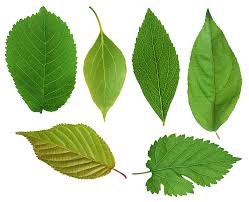Since ancient times, diarrhoea has been recognised as one of the most important health issues worldwide, particularly afflicting those populations of socio-economically backward classes and third-world countries.
Diarrhoea is characterised by rapid passage of semisolid or watery stool, three or more times in a day with severe or light abdominal pain and bowel sounds. It is caused either by intake of polluted water, consumption of contaminated food or through physical contact like handshake.
Howbeit, studies have indicated effective medicinal plants that can be used in the treatment of diarrheal disease. These include:
Mango leaves
Scientists testing out water extract made from leaves of mango tree in female albino rats under laboratory conditions found that it has a comparative effectiveness with conventional medicines used in treating diarrhoea.
In a 2015 study, published in the Journal of Ethnopharmacology, researchers said it significantly reduced the total number of stool and number of diarrhoeal stool in a dose-dependent manner when compared with the untreated control.
Guava leaves
Researchers have corroborated the effectiveness of water extract of the leaves of guava in the treatment of a plethora of human ailments, including diarrhoea. This was in the 2008 edition of the Journal of Smooth Muscle Research.
Plantain plant sap
The sap of plantain (Musa paradisiacal) collected from the internode of the plant for treatment of diarrhoea dates into ages. In the 2015 edition of the Journal, Evidence Based Complement and Alternative Medicine, scientists found that the sap decreased the number, water content, fresh weight and total number of wet feaces and increased the inhibition of defecations in a dose dependent fashion.
Calpurnia aurea
Called bomubomu in Yoruba, Calpurnia aurea is used to treat many stomach complaints, including diarrhoea caused by germs such as Shigella flexneri, Staphylococcus aureus, Escherichia coli and Salmonella typhi.
Its methanol leaf extract significantly reduced the time of onset of diarrhaea, the frequency of defecation (total number of faecal output) and weight of faeces in Swiss albino mice at different concentrations over a period of four hours.
The 2013 study was published in the BMC Complementary and Alternative Medicine.
Zobo
Researchers at the Department of Veterinary Physiology and Pharmacology, University of Ibadan, Ibadan, have confirmed the popular herbal drink, Zobo, prepared with roselle (fresh calyx of Hibiscus sabdariffa (Roselle, Soboroto or Ishapa) as main ingredient) scent leaf (Ocimum gratissimum), garlic and ginger could be effectively used to treat diarrhoea and pneumonia.
The researchers in the study published in African Journal of Biomedical Research wrote: “The extracts of both Ocimum gratissimum and Hibiscus sabdariffa could be useful at appropriate doses in the control of diarrhoea. Hibiscus sabdariffa would be more effective in this regard.”
Although, they could not say specifically the mechanism by which Hibiscus sabdariffa caused this action, they said that Zobo was more effective than scent leaves in the treatment of diarrhoea.
Nutmeg
Researchers have validated the efficacy of nutmeg, the age long cooking spice, in the treatment of diarrhoea. The methanol extract of African nutmeg was found to significantly reduce the number of faecal droppings at the doses tested.
It also reduced water and electrolytes secretion into the small intestine, which substantiates its use in the treatment of diarrhoea in traditional medicine.
Although the mechanisms by which the extract of African nutmeg reduced the frequency of diarrhoea is still not clear, they suggested the possibility of formulating the powdered seed of this plant or its alcohol extract to a herbal anti-diarrhoea remedy.
Green banana
Unripe, green banana, a common fruit when added to regular diet of children would enhance their recovery from persistent diarrhoea as well as support better absorption of other nutrients that the body requires in the child’s diet.
A community-based trial in rural Bangladesh, which involved 2,968 Bangladeshi rural children between the ages of six and 36 months, found that adding cooked green banana to the diets hastened recovery of children from diarrhoea at home.
The 2010 study which was published in the Tropical Medicine and International Health Journal found also that the cumulative probability of cure was significantly faster in children receiving green banana alongside the standard care for diarrhoea.

